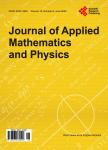Inference of Median Subjective Threshold in Psychophysical Experiments
Inference of Median Subjective Threshold in Psychophysical Experiments作者机构:Department of Applied Mathematics University of California Santa Cruz CA USA U.S. Department of Defense Joint Intermediate Force Capabilities Office Quantico VA USA Department of Applied Mathematics Naval Postgraduate School Monterey CA USA
出 版 物:《Journal of Applied Mathematics and Physics》 (应用数学与应用物理(英文))
年 卷 期:2021年第9卷第5期
页 面:982-1002页
学科分类:0809[工学-电子科学与技术(可授工学、理学学位)] 08[工学]
主 题:Method of Limits Method of Constant Stimuli Subjective Threshold Point of Subjective Equality (PSE) Adaptive Bayesian Method
摘 要:We consider the response of a test subject upon a skin area being heated with an electromagnetic wave or a contact surface. When the specifications of the electromagnetic beam are fixed, the stimulus is solely described by the heating duration. The binary response of a subject, escape or no escape, is determined by the stimulus and a subjective threshold that varies among test realizations. We study four methods for inferring the median subjective threshold in psychophysical experiments: 1) sample median, 2) maximum likelihood estimation (MLE) with 2 variables, 3) MLE with 1 variable, and 4) adaptive Bayesian method. While methods 1 - 3 require samples of time to escape measured in the method of limits, method 4 utilizes binary outcomes observed in the method of constant stimuli. We find that a) the adaptive Bayesian method converges and is as efficient as the sample median even when the assumed model distribution is incorrect;b) this robust convergence is lost if we infer the mean instead of the median;c) for the optimal performance in an uncertain situation, it is best to use a wide model distribution;d) the predicted error from the posterior standard deviation is unreliable, dominated by the assumed model distribution.



